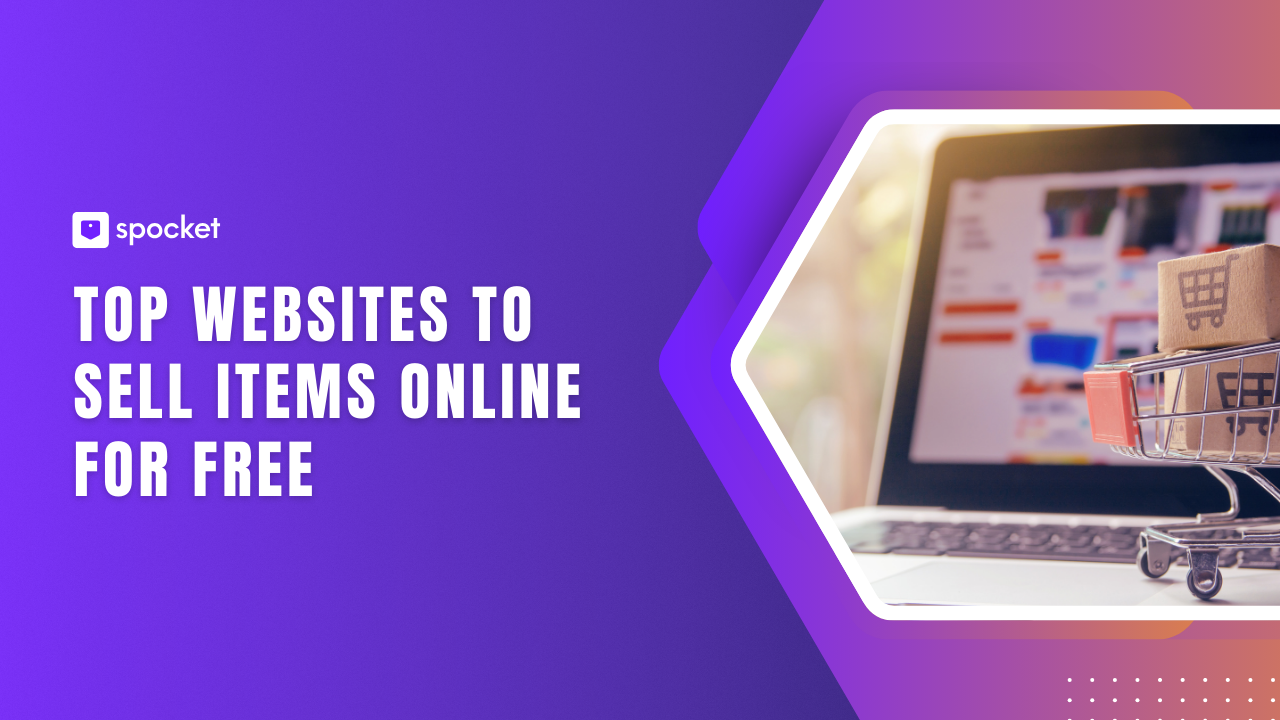AI is no longer a futuristic concept—it’s transforming how we shop online. Imagine visiting a site, and products are recommended based on your preferences. That’s AI at work, making shopping easier and more personalized.
It’s not just about customer experience. AI is streamlining operations too. From managing inventory to forecasting sales, it’s making e-commerce businesses smarter.
But with AI’s power comes responsibility. E-commerce companies must balance automation with privacy, data security, and ethical concerns. As AI continues to shape the industry, understanding its role is crucial for businesses aiming to stay competitive.
In this article, we’ll explore how AI is changing e-commerce. We’ll break down its applications, benefits, challenges, and the tools that businesses are using to enhance both customer journeys and operational efficiency.
What is AI in E-Commerce? Understanding Machine Learning, Predictive Algorithms, and More
AI in e-commerce isn’t just about automation—it’s about creating smarter, more efficient experiences for both businesses and customers. By harnessing technologies like machine learning and predictive algorithms, AI can handle tasks, make decisions, and optimize processes without human intervention. Let’s dive into the key components that make AI tick in the e-commerce world.
Machine Learning: Teaching Machines to Learn and Adapt
Machine learning (ML) is the backbone of many AI-driven e-commerce tools. By analyzing vast amounts of data, ML algorithms identify patterns and improve over time. This means the more data AI gets, the smarter and more accurate it becomes. For e-commerce, this translates into better product recommendations, dynamic pricing, and even personalized customer service.
Natural Language Processing (NLP): Bridging the Gap Between Humans and Machines
NLP enables AI to understand and interact with human language. It powers tools like chatbots and virtual assistants, allowing them to answer questions, handle customer inquiries, and even process returns. By continuously learning from interactions, NLP systems get more effective at responding to customer needs.
Predictive Analytics: Forecasting What’s Next
Predictive analytics uses past data to forecast future trends. In e-commerce, this could mean predicting which products will be in demand or which customers are likely to make a purchase. By leveraging this data, businesses can make smarter decisions, from managing inventory to creating targeted marketing campaigns.
How AI Is Powering E-Commerce Operations: A Deep Dive into Key Applications
AI is transforming not just the way customers shop, but also the inner workings of e-commerce businesses. From personalized shopping experiences to streamlined operations, AI is creating smarter, more efficient systems. In this section, we’ll explore the key areas where AI is making an impact in e-commerce.
AI in Personalization and Customer Experience
AI's ability to personalize the shopping experience is one of its most powerful features. By analyzing past purchases, browsing history, and even search patterns, AI can offer tailored product recommendations that make shopping easier for customers. This leads to a more engaging and satisfying experience, increasing the likelihood of purchases.
For example, online clothing stores use AI to suggest outfits based on the customer’s previous shopping behavior, making it feel like the store "knows" them personally. This not only improves customer satisfaction but also boosts sales by showcasing products that the customer is most likely to buy.
AI-Driven Demand Forecasting and Inventory Management
AI plays a crucial role in managing inventory. By analyzing data from past sales, AI tools can predict future demand and help businesses keep the right amount of stock at the right time. This helps reduce both stockouts (which result in missed sales) and overstocking (which ties up capital in unsold goods).
For instance, tools like Spocket use AI to forecast trends and adjust inventory levels accordingly. This ensures that businesses can maintain the right supply levels without wasting resources.
AI for Fraud Prevention and Security
Fraud prevention is another critical area where AI excels. AI systems can monitor customer behavior in real-time, flagging any suspicious activity. This includes identifying unusual login patterns, payment methods, or order locations. By analyzing these patterns, AI can block fraudulent transactions before they cause damage.
Using AI for security not only protects the business from losses but also helps build trust with customers, knowing their sensitive information is being monitored and safeguarded by advanced technology.
AI-Powered Customer Support: The Rise of Virtual Assistants
Customer support is becoming faster and more efficient with the help of AI. AI-driven chatbots are available 24/7, responding to customer queries and assisting with returns, refunds, or tracking orders. These chatbots learn from each interaction, improving their responses over time.
This means customers get instant help, even when human agents aren’t available, and businesses can reduce the load on their support teams. The result? Faster resolutions, happier customers, and better resource management.
The Transformative Benefits of AI in E-Commerce: How AI is Revolutionizing the Industry
AI isn’t just a tool—it’s a game changer for e-commerce. From simplifying operations to boosting sales, the impact of AI is far-reaching. But how exactly does AI benefit both businesses and customers? Let’s explore the transformative effects AI is having on the e-commerce landscape.
Streamlining E-Commerce Operations with AI Automation
One of the biggest benefits of AI is automation. Routine, time-consuming tasks like product tagging, order routing, and inventory tracking can all be handled by AI. This reduces the workload for employees, freeing them up to focus on more strategic and creative tasks. For example, AI tools like Spocket can automatically update product listings and track stock levels, ensuring businesses stay organized without manually updating every detail. Hence, by choosing an agentic commerce platform, businesses can simplify adoption and enhance automation efficiency.
By automating these processes, AI improves efficiency, minimizes human error, and accelerates business operations, making everything run smoother.
Boosting Conversions and Sales through AI Personalization
AI’s ability to personalize the shopping experience is not only beneficial for customers, but it also directly boosts sales. Personalized product recommendations and tailored shopping experiences make customers feel understood and more likely to make a purchase. AI can analyze data like browsing history, past purchases, and even time spent on a product page to recommend items customers are most likely to buy.
For instance, e-commerce platforms use AI to send personalized emails featuring products related to what customers have recently viewed or left in their cart. This targeted approach leads to higher engagement rates and better conversion rates, as it appeals directly to the individual shopper’s interests.
Improving Inventory Management with AI Algorithms
Effective inventory management is critical for any e-commerce business, and AI makes this easier than ever. By analyzing historical data, customer behavior, and market trends, AI can forecast demand with remarkable accuracy — especially when paired with workflow orchestration tools or modern airflow alternatives that streamline large-scale data processing. This helps businesses avoid both stockouts and overstocking, saving money and preventing lost sales.
AI tools also enable automatic reordering, so businesses can maintain an optimal inventory level without worrying about running out of products or overcommitting to stock that may not sell. These efficiencies reduce waste, enhance cash flow, and keep operations running smoothly.
Enhancing Security and Trust with AI
In today’s online shopping world, security is crucial, and AI plays a key role in keeping customers and businesses safe. AI systems can monitor transactions for suspicious activity, flagging anything unusual and preventing fraud before it happens. From identifying fraudulent payment methods to spotting unusual login attempts, AI ensures that sensitive customer information is protected.
The enhanced security not only protects the business but also builds customer trust. Customers are more likely to make a purchase if they feel confident that their payment and personal details are secure, thanks to AI-powered fraud detection systems.
Challenges and Risks of AI in E-Commerce: What You Need to Know
While AI brings tremendous benefits to e-commerce, it’s not without its challenges. Implementing AI systems requires careful consideration of several factors—from data quality to privacy concerns. In this section, we’ll explore some of the common hurdles businesses face when adopting AI, and how to address them.
Data Quality and Accuracy: The Backbone of AI Systems
For AI to function effectively, it needs high-quality, structured, and accurate data. Without it, AI systems can make inaccurate predictions or recommendations, leading to poor customer experiences. For example, if product categories are incorrectly labeled, AI-powered recommendation engines may suggest irrelevant items, frustrating customers and potentially lowering sales.
To ensure AI systems work at their best, businesses must prioritize data collection and management. Regularly cleaning and updating data can help prevent errors and maintain AI accuracy.
Privacy Concerns and Ethical Issues: Balancing AI with Customer Trust
One of the biggest challenges of using AI in e-commerce is balancing personalization with privacy. Customers expect personalized shopping experiences, but they also want their personal data to be protected. The more data AI collects, the greater the risk of privacy violations, especially with regulations like GDPR and CCPA in place.
To address these concerns, businesses need to be transparent about their data collection practices and give customers the ability to opt-in or opt-out. Implementing strong encryption methods and complying with privacy regulations will help build trust and protect customer information.
Cost and Complexity of AI Integration
Adopting AI can be costly, especially for smaller businesses. While entry-level AI tools may be affordable, scaling them to meet a business’s growing needs often requires significant investment in infrastructure, training, and AI Integration Solutions.
To manage costs, businesses should consider starting with smaller, more affordable AI tools and scaling up as needed. Additionally, many AI platforms offer flexible pricing models, allowing businesses to pay for the features they need and expand as their budget allows.
Bias in AI: Understanding and Mitigating Risk
AI systems learn from data, and if the data is biased, the system will be too. Bias can manifest in many ways, from skewed product recommendations to unfair advertising targeting. For instance, if an AI model is trained primarily on data from one demographic group, it may fail to serve the needs of others, limiting product visibility or excluding certain groups.
To mitigate bias, businesses must ensure that their AI models are trained on diverse, representative data. Regularly auditing AI systems for fairness and implementing safeguards can help prevent discriminatory outcomes.
Over-Reliance on Automation: When Human Oversight Is Needed
While AI can automate many tasks, it’s not perfect. In some cases, automated systems may miss nuances in customer behavior or misinterpret unusual situations. For example, an AI-powered chatbot might fail to understand the tone of a customer’s message or misinterpret a complex query.
That’s why human oversight is still necessary. Businesses should use AI as a tool to support human decision-making, not replace it entirely. Combining the efficiency of AI with the judgment of humans can ensure better customer experiences and smoother operations.
Top AI Tools for E-Commerce: How to Choose the Right Solutions for Your Business
With so many AI tools available today, it can be overwhelming to choose the right ones for your e-commerce business. Whether you’re looking to improve customer experience, manage inventory, or optimize pricing, there’s an AI tool that can help. In this section, we’ll explore the best AI tools for e-commerce and how to choose the ones that best fit your needs.
The Best AI Tools to Optimize Your E-Commerce Operations
AI can transform various aspects of your e-commerce business. From product recommendations to customer service, these tools can automate key tasks, boost efficiency, and improve the customer experience. Below are some of the top AI tools you should consider integrating into your e-commerce platform:
Shopify Magic: Simplifying Content Creation
Shopify Magic is an AI-powered suite that helps automate product descriptions, customer replies, and email generation. This tool is ideal for small to mid-sized businesses that need to streamline content creation without hiring additional staff. By integrating Shopify Magic into your store, you can save time on manual tasks while maintaining high-quality content.
Klevu: Enhancing Search and Product Discovery
Klevu is an AI-powered search and product discovery tool that enhances the on-site search experience. Using natural language processing (NLP), it understands user queries and provides more accurate product recommendations. With Klevu, customers are less likely to leave your site frustrated by irrelevant search results, leading to higher conversions and better engagement.
Zinrelo: Optimizing Loyalty Programs
Zinrelo uses AI to personalize and optimize loyalty programs. It helps retailers understand user engagement and tailors reward structures based on customer behavior. This leads to increased customer retention and higher repeat purchases. With Zinrelo, businesses can create reward programs that truly resonate with their customers, fostering long-term relationships.
Re:amaze: AI-Powered Customer Support
Re:amaze is a customer support platform that integrates AI to provide smarter auto-replies for common inquiries. It’s particularly useful for businesses that need to manage customer interactions across multiple channels (email, live chat, social media). By automating responses, Re:amaze reduces the workload on your support team and speeds up response times for customers.
Dynamic Yield: Personalizing Content and Experiences
Dynamic Yield uses AI for A/B testing and content personalization. It helps e-commerce businesses tailor their websites, banners, and product recommendations based on user behavior. This tool is great for enhancing the user experience and boosting engagement. With Dynamic Yield, businesses can ensure they’re showing the most relevant content to each visitor, increasing the likelihood of conversions.
How to Use AI Tools to Drive Sales and Customer Engagement
To truly leverage AI for boosting sales and customer engagement, it’s important to align AI tools with your business goals. Here are some strategies to effectively use AI:
- Personalized Marketing: Use AI tools like Klevu or Dynamic Yield to create personalized experiences, whether through custom product recommendations or personalized emails.
- Enhanced Customer Support: Tools like Re:amaze can automate responses, allowing your customer service team to focus on complex issues while AI handles common questions. This ensures quicker response times and better customer satisfaction.
- Predictive Analytics: Tools such as Zinrelo can help predict which customers are likely to make repeat purchases, allowing you to tailor your marketing and loyalty programs accordingly.
By integrating the right AI tools into your e-commerce operations, you can improve efficiency, boost sales, and deliver an enhanced shopping experience for your customers.
Conclusion: AI in E-Commerce: The Path to a Smarter, More Efficient Future
AI is revolutionizing e-commerce by streamlining operations and enhancing customer experiences. From personalized shopping recommendations to efficient inventory management, AI is helping businesses become smarter, faster, and more customer-centric. As AI tools continue to evolve, they open up new possibilities for e-commerce, giving businesses the edge they need to stay competitive.
However, it’s important to strike a balance between automation and human involvement. While AI can handle many tasks, human oversight remains crucial for maintaining customer satisfaction and ethical decision-making. By leveraging AI strategically, businesses can stay ahead in the fast-paced world of e-commerce, making operations more efficient and meeting growing customer expectations.






































